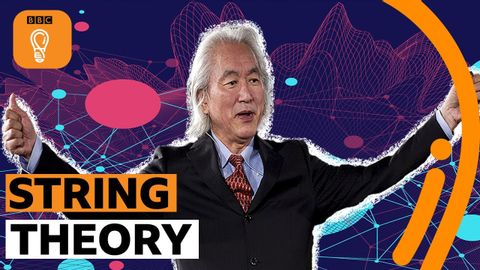弦理論--瞭解宇宙的簡單方法 | BBC思想 (String theory - a simple way to understand the universe | BBC Ideas)
Summer 發佈於 2021 年 10 月 07 日  沒有此條件下的單字
沒有此條件下的單字US /ˈprɛznt/
・
UK /'preznt/
- adj.出席;在場的;目前的
- n.正在進行的;現在時態;目前的;禮物
- v.t.介紹;主持;介紹;展現;贈送
- v.i.出現
- v.i.是重要的
- n. (u.)物質
- n.件事情;問題;原因
US /ˈkɑnˌflɪkt/
・
UK /'kɒnflɪkt/
- n. (c./u.)衝突;爭執;戰爭;內心衝突
- v.t./i.衝突;抵觸
